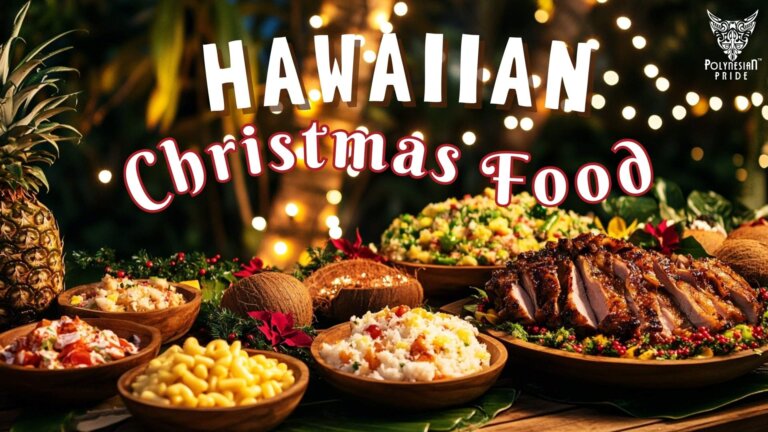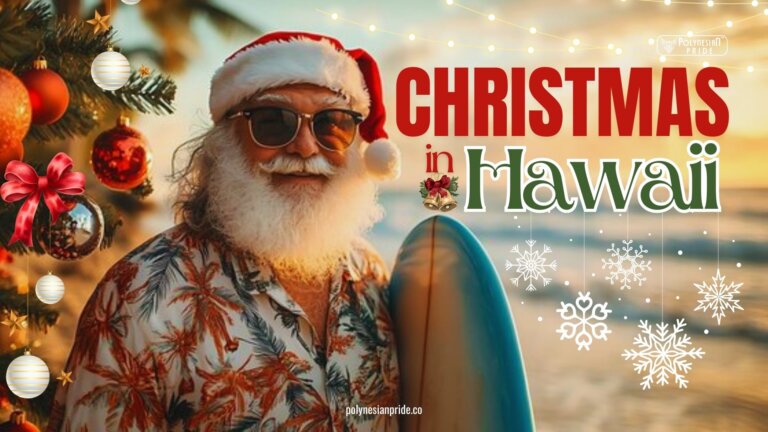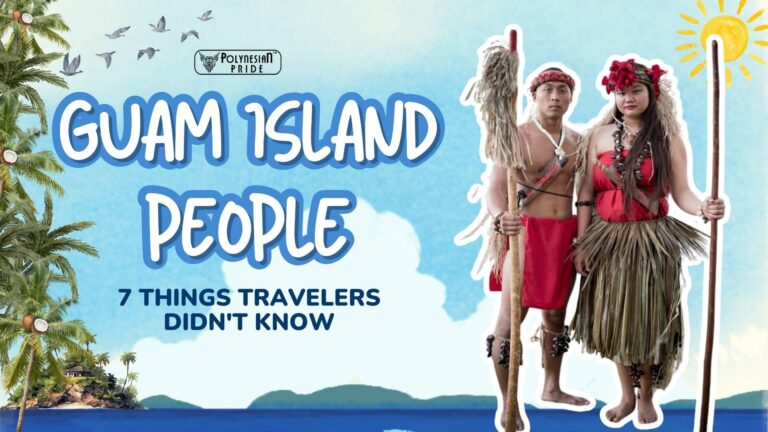Best Time to Visit French Polynesia: Ultimate Guide

Imagine a world of crystal-clear turquoise waters, lush green mountains rising from the ocean, and pristine beaches kissed by golden sunlight. This is French Polynesia, a tropical paradise that beckons travelers seeking an escape to an idyllic world. However, finding the best time to visit French Polynesia can be a bit of a puzzle.
Choosing the right season can elevate your experience, maximizing your chances to bask in sunny beaches, witness the vibrant culture, or dive into the heart of Polynesian life. This article delves into the nuances of French Polynesia’s climate, highlighting the best times to explore its diverse offerings. From vibrant festivals to exhilarating water sports, we’ll guide you toward the ideal season for your dream Polynesian adventure.
Understanding the Climate of French Polynesia
Overview of the Climate
French Polynesia boasts a tropical climate characterized by warm temperatures and high humidity throughout the year. The islands are located in the South Pacific Ocean, significantly influencing their weather patterns. Expect average highs ranging from the mid-70s to mid-80s Fahrenheit (24-29 Celsius), even during the cooler months. The islands receive a generous amount of sunshine for endless beach bliss and water sports.
The climate is primarily influenced by two main factors: the trade winds and the surrounding ocean currents. The trade winds provide a cooling effect, especially during the dry season, while the ocean currents help regulate the temperature. Travelers can expect a consistent climate, but understanding the seasonal variations is crucial for planning the perfect trip.
Seasonal Variations
French Polynesia’s year is divided into two primary seasons: the dry season and the wet season. Each holds unique qualities, influencing the types of activities you can enjoy and the overall vibe of your trip.
Dry Season (May to October)

During the dry season, which stretches from May to October, visitors can embrace the warmth of sunny days and gentle breezes. This period is characterized by minimal rainfall, clear skies, and comfortable temperatures, making it ideal for outdoor activities and experiencing the islands in full glory. Many travelers consider this period the best time to visit French Polynesia.
The dry season offers pleasant weather with low humidity and cool breezes, creating a perfect environment for beach activities, hiking, and exploring the islands. The vibrant cultural festivals during this time add to the allure, making it a popular choice among tourists.
Wet Season (November to April)

The islands experience the wet season from November to April, marked by increased rainfall, lush landscapes, and a more tranquil atmosphere. While showers are more frequent, they are usually brief and intense, leaving way for sunshine afterward.
Travelers visiting during the wet season can enjoy the revitalized beauty of the islands, with lush vegetation and vibrant flora. This period is ideal for quieter vacations, allowing visitors to immerse themselves in the local culture without the hustle and bustle of peak tourist crowds.
Special Events and Festivals
Heiva i Tahiti (July)
Tahiti Pearl Regatta (May)
The Billabong Pro Teahupoo (August)
Water Sports and Beach Activities:
Scuba Diving & Snorkeling: Excellent visibility, vibrant reefs, famous dive sites
Surfing: Best conditions (July-September), powerful waves at Teahupoo
Sailing & Yachting: Calm waters, ideal for inter-island sailing
Hiking & Land Adventures: Clear trails, minimal rainfall, recommended trails
Whale Watching: Primetime (July-November), humpback whale migration
Heiva i Tahiti: July, the grand celebration of Polynesian culture
Tahiti Pearl Regatta: May, premier sailing event, cultural engagement
Billabong Pro Teahupoo: August, a world-renowned surfing event
Ono’u Tahiti Graffiti Festival: October, Street art festival with global artists
Hawaiki Nui Va’a: November, Multi-day outrigger canoe race, stunning island scenery
Special Events and Festivals
Matari’i i Raro (November)
Tiare Tahiti Festival (December)
Ua Pou Fruit Festival (January)
Water Sports and Beach Activities
Scuba Diving & Snorkeling: Possible with limited visibility, vibrant marine life
Surfing: Good conditions, but larger swells may pose challenges
Sailing & Yachting: Possible with storms, lush landscapes, intimate experience
Hiking & Land Adventures: Vibrant greenery, dramatic waterfalls, flourishing wildlife
Whale Watching: Less optimal, but some whale activity may still be observed
Matari’i i Raro: November, harvest festival, agricultural significance
Tiare Tahiti Festival: December, floral extravaganza, cultural
Ua Pou Fruit Festival: January, focus on exotic fruits and culinary traditions
Best Time for Activities in French Polynesia
Water Sports and Beach Activities
French Polynesia is renowned for its stunning beaches and crystal-clear waters, making it a haven for water sports enthusiasts. The best time to visit French Polynesia to engage in various aquatic activities varies depending on the type of sport.
Scuba Diving and Snorkeling
The dry season is from May to October, the most popular time for scuba diving and snorkeling. The clear waters, vibrant coral reefs, and teeming marine life create an unforgettable underwater spectacle. Visibility is excellent during this time, offering an unparalleled vista of the underwater wonders. Divers can explore famous sites like the Coral Gardens in Moorea or the Tiputa Pass in Rangiroa, where encounters with dolphins and colorful fish are common.
In contrast, while diving is still possible during the wet season, increased rainfall may compromise visibility. However, the underwater ecosystem remains vibrant, and adventurous divers may find fewer crowds in popular spots.

Surfing
Surfing is another thrilling activity that attracts many visitors to French Polynesia. While surfing conditions are generally good throughout the year, the best conditions are found during July, August, and September. The consistent trade winds generate powerful waves, attracting avid surfers to renowned breaks like Teahupoo on Tahiti.
The dry season provides optimal conditions for those looking to catch some waves. Still, beginners may find the summer months more challenging due to larger swells. Surf schools and rental shops are available across the islands, catering to novice and experienced surfers.
Sailing and Yachting
Sailing around the islands of French Polynesia is a magical experience, offering breathtaking views and access to secluded beaches. From May to October, the dry season, with its calmer waters and consistent winds, is ideal for this activity. Sailors can navigate between islands like Bora Bora, Huahine, and Raiatea, enjoying the stunning scenery.
Sailing is still possible during the wet season, but occasional storms may disrupt plans. Nevertheless, the lush landscapes and fewer tourists can make for a more intimate sailing experience.
Hiking and Land Adventures
Exploring the islands’ interior through hiking is a rewarding way to connect with nature and experience the breathtaking landscapes of French Polynesia.
Recommended Trails
Hiking trails vary in difficulty and scenery, offering something for everyone. The dry season provides the best conditions for outdoor exploration, with clear trails and minimal rainfall. Popular hikes include the Mount Aorai trail on Tahiti, which rewards trekkers with panoramic views of the island, and the scenic Faarumai Waterfalls hike, showcasing stunning waterfalls and lush greenery.
While hiking is possible throughout the year, the wet season showcases the vibrant greenery of the rainforests and the dramatic beauty of volcanic landscapes. This period is ideal for experiencing nature’s lushness, with waterfalls flowing at their fullest and wildlife flourishing.

Exploring Rainforests and Volcanic Landscapes
The diverse ecosystems of French Polynesia offer unique opportunities for exploration. During the wet season, the rainforests come alive with vibrant flora and fauna, providing a different perspective on the islands’ natural beauty. Guided tours can enhance the experience, allowing visitors to learn about the land’s unique biodiversity and cultural significance.
Adventurous travelers can also explore volcanic landscapes, such as the ancient craters of Moorea or the rugged terrain of Tahiti’s interior. These experiences provide insight into the islands’ geological history and the rich cultural heritage of the French Polynesian people.
Whale Watching
Witnessing the majesty of humpback whales is a highlight for many visitors to French Polynesia. From July to November, these magnificent creatures migrate to the region’s warm waters to breed and give birth. This period is often regarded as the best time to visit French Polynesia for whale watching.
Optimal Months for Whale Watching
The prime time for whale watching coincides with the migration period, offering opportunities to witness these majestic animals breaching, playing, and interacting with their young. Popular whale-watching spots include the Moorea, Bora Bora, and Huahine islands, where boat tours provide close encounters with these gentle giants.
Visitors can book guided tours with experienced operators who prioritize responsible viewing practices, ensuring minimal disturbance to the whales while maximizing the chance for memorable sightings.
Humpback Whale Migration Patterns

Understanding the migration patterns of humpback whales adds depth to the whale-watching experience. Witnessing these whales travel thousands of miles from their feeding grounds in Antarctica to the warmer waters of French Polynesia is a reminder of the incredible natural phenomena occurring in our oceans.
Tour operators often provide educational insights into the behavior and biology of humpback whales, enriching the experience for visitors eager to learn more about these awe-inspiring creatures.
Special Events and Festivals
French Polynesia’s vibrant festivals offer a window into its rich cultural tapestry. They’re more than just events—they’re immersive experiences that let you connect deeply with Polynesian traditions and the local community.
Heiva i Tahiti (July)

Heiva i Tahiti is the grand celebration of Polynesian culture and heritage that lights up the island every July. Spanning the entire month, this festival brings to life the spirit and traditions of Tahiti through a series of vibrant dance performances, traditional songs, and sporting events. What sets Heiva apart is its commitment to authenticity and cultural preservation. The festival is a powerful expression of identity, each performance is a storytelling journey. Dancers, clad in intricately designed costumes, sway to the rhythm of traditional Tahitian music, offering a feast for the senses.
Heiva is renowned for its unique sports competitions, which include stone lifting, outrigger canoe races, and javelin throwing. These events offer a fascinating glimpse into the physical prowess and skills deeply rooted in Polynesian history. Tourists can also witness the making of traditional costumes and decorations, which are works of art in themselves and represent the island’s flora and fauna.
Matari’i i Raro (November)

Matari’i i Raro marks the transition into the wet season and is steeped in agricultural significance. This festival is deeply tied to the Polynesian calendar and the cycles of nature, signaling the start of the harvest season. Matari’i i Raro is celebrated in November when locals gather to honor the earth’s bounty and express gratitude for the fertile land.
The festival is distinctive for its food, music, and community rituals blend. Visitors can partake in traditional feasts focusing on local produce like taro, breadfruit, and freshly caught seafood. These meals’ communal preparation and sharing embody the Polynesian values of family and togetherness. Rituals and dances performed during the festival are meant to honor ancestral spirits and ensure prosperity for future harvests, providing a meaningful cultural experience.
Tiare Tahiti Festival (December)
Celebrating the national flower of Tahiti, the Tiare Tahiti Festival is a floral extravaganza that bursts into bloom every December. The festival is a tribute to the Tiare flower, a symbol of Tahiti’s beauty and natural abundance. Streets and homes are adorned with elaborate floral displays, making the island a visual delight.
Beyond the floral displays, the festival offers a platform for traditional arts and crafts. Visitors can explore exhibitions showcasing the craftsmanship of local artisans who create beautiful items like woven baskets, jewelry, and decorative carvings. The festival is also a great time to learn about the medicinal and cultural uses of the Tiare flower, offering insight into how it is woven into the daily lives and traditions of the Tahitian people.
Tahiti Pearl Regatta (May)

Held every May, the Tahiti Pearl Regatta is the premier sailing event in French Polynesia, attracting sailors and yachting enthusiasts from across the globe. This regatta is not just a race; it’s a celebration of Polynesia’s maritime legacy, offering stunning vistas as the yachts navigate through some of the world’s most picturesque waters.
The event is unique for its blend of competitive sailing and cultural engagement. Participants and spectators enjoy a series of vibrant cultural activities, including local music performances and traditional Polynesian dances at each stopover. This makes the regatta a unique fusion of sport and tradition, providing an enriching cultural experience amidst the thrill of racing.
The Billabong Pro Teahupoo (August)

August brings the adrenaline-pumping Billabong Pro Teahupoo, a world-renowned surfing event against one of the world’s most formidable waves. Known for its intense and challenging barrels, Teahupoo attracts top surfers who come to test their skills on this legendary wave.
The sheer spectacle of nature’s power and human courage truly sets this event apart. Spectators can witness professional surfers tackle waves that reach incredible heights, offering a thrilling experience. Viewing platforms on the cliffs and boats allows for up-close action observation. The event showcases the extreme side of surfing. It emphasizes surfers’ respect and harmony with the ocean, making it a captivating experience for surfing fans and newcomers.
Ua Pou Fruit Festival (January)
In January, the island of Ua Pou hosts its annual Fruit Festival. This celebration brings attention to the island’s agricultural bounty and tropical fruits. This lively festival showcases the island’s vibrant produce and the cultural practices surrounding food.
The festival offers a delightful mix of culinary exploration and cultural immersion. Visitors can enjoy tastings of exotic fruits like rambutan, mango, and papaya, all freshly harvested. Cooking demonstrations reveal traditional Polynesian techniques and recipes, allowing visitors to learn and savor authentic flavors. The festival is also rich in cultural performances, including traditional dances and music, highlighting the harmonious relationship between the islanders and their natural environment.
Travel Tips for Planning Your Visit
Many dream of a trip to French Polynesia, but careful planning is essential to making the most of your visit. Here are a collection of practical tips to help ensure your journey is smooth and enjoyable.
Booking Accommodations
When planning your trip to French Polynesia, booking accommodations in advance is crucial, especially if you’re traveling during peak seasons (May to October). The islands offer various lodging options, from luxurious overwater bungalows that provide stunning ocean views to cozy guesthouses that offer an intimate glimpse into local life.
- Consider Your Preferences: If you’re seeking a luxury experience, resorts on Bora Bora and Moorea provide overwater villas with direct lagoon access and top-notch amenities. For a more budget-friendly option, consider charming pensions or family-run guesthouses on islands like Huahine or Raiatea, which offer personalized service and authentic cultural experiences.
- Peak Season Advice: During peak tourist months, accommodations fill up quickly. Booking several months in advance can ensure you get your preferred choice of lodging and might also allow for early-bird discounts.
Packing Essentials
Packing for French Polynesia requires attention to the island’s tropical climate and activities. Here’s a checklist of essentials to consider:
- Clothing: Lightweight, breathable clothing is necessary due to the warm, humid climate. Due to the warm, humid climate, lightweight, breathable clothing is necessary. Pack casual wear for daily excursions and include a few semi-formal outfits for dining at upscale restaurants. A swimsuit is essential for enjoying the beaches and lagoons; water shoes can protect your feet while exploring coral reefs.
- Weather Considerations: In the wet season (November to April), pack a lightweight waterproof jacket or poncho and an umbrella. A small, portable rain cover can dry you during unexpected tropical showers.
- Health and Safety: Bring reef-safe sunscreen to protect your skin and marine life. Insect repellent is advisable to fend off mosquitoes, especially if you visit rainforest areas. Remember essentials like a wide-brimmed hat and sunglasses to shield against the intense tropical sun.
Navigating the Islands
Exploring the islands of French Polynesia involves a combination of air, sea, and land transport. Understanding these options will help you move efficiently and enjoyably between your destinations.
- Inter-Island Travel: The most common way to travel between the islands is via domestic flights operated by local airlines such as Air Tahiti. These flights are efficient and offer breathtaking aerial views of the archipelago. Alternatively, ferries connect several islands, providing a scenic and leisurely option for island-hopping.
- On-Island Transport: Once on an island, taxis and buses are readily available for local travel. Renting a car or a scooter can allow you to explore at your own pace, especially on larger islands like Tahiti and Moorea. For a unique experience, consider renting a bicycle to navigate the more compact islands.
- Practical Tips: If you plan to rent a vehicle, it’s wise to book in advance, especially during high season. Driving is on the right-hand side of the road, and local road signs can differ, so familiarizing yourself with basic French road terms can be helpful.
Conclusion
In French Polynesia, the best time to visit French Polynesia varies based on your interests and preferences. Whether you’re seeking sun-soaked beaches, thrilling water sports, or vibrant cultural experiences, there’s a perfect season. Plan, consider your priorities and let the enchanting beauty of the islands guide you on an unforgettable journey.
Frequently Asked Questions
What is the best time to visit French Polynesia?
French Polynesia is at its best between June and August when the climate is at its driest and the weather is balmy, sitting comfortably in the high 70s to mid-90s Fahrenheit. However, this can be a slightly busier time of year, and the months on either side of this period can see comfortable temperatures, but lower prices.
What month is best to visit Bora Bora?
April through October is Bora Bora’s high season, with exquisite weather for outdoor adventures and less humidity. This can be the busiest time, especially during the summer months, so for optimum weather with fewer crowds, choose April or May,” Emmanuel Richardet, general manager at The St.
Does French Polynesia have a rainy season?
November to April is French Polynesia’s wet season, with concentrated bursts of rainfall punctuated by days of sunshine. At this time hotel air-conditioning becomes a necessity as humidity rises.
Are there any festivals to consider when planning my visit?
Yes, consider attending festivals such as Heiva i Tahiti in July, Matari’i i Raro in November, or the Tiare Tahiti Festival in December. These events showcase Polynesian culture and traditions.
What activities are best during each season?
Enjoy water sports like snorkeling, diving, and surfing in the dry season. The wet season is ideal for quieter experiences and exploring lush rainforests

I am Leilani Miller – I research focusing on Vanuatu – volcanic landscapes, blue holes, coral reefs & rainforests. I have over five years of experience researching and sharing insights on tourism and environmental activism. Explore and experience without limits through my latest article.
Contact information:
Email: [email protected]
Tel: +1 (808) 555-1528






